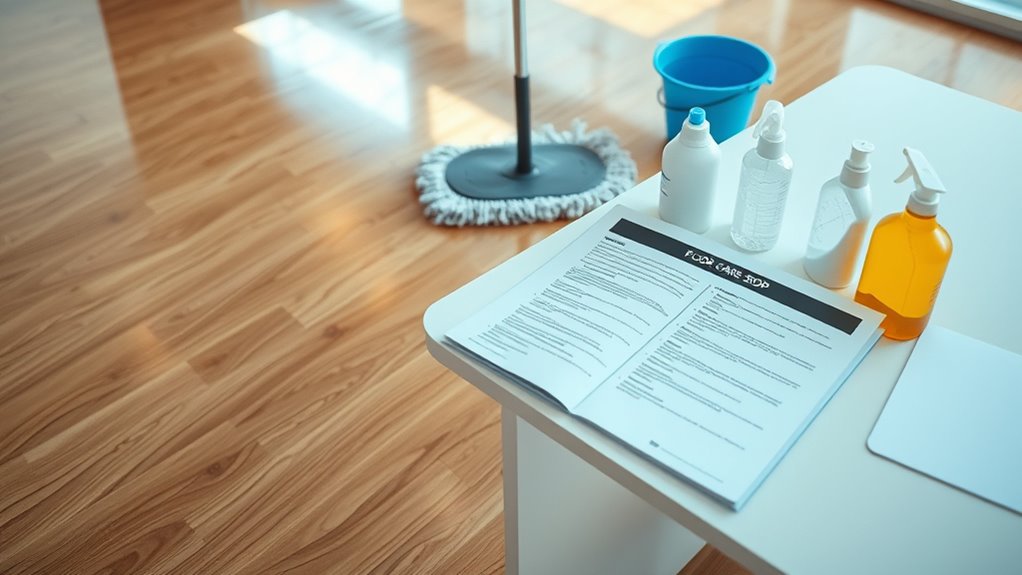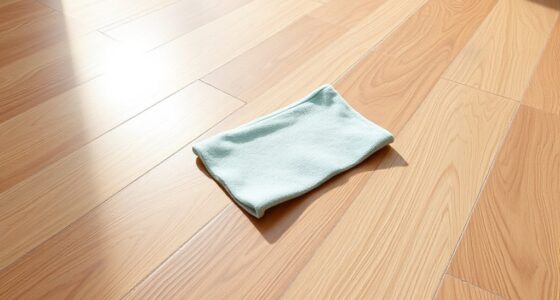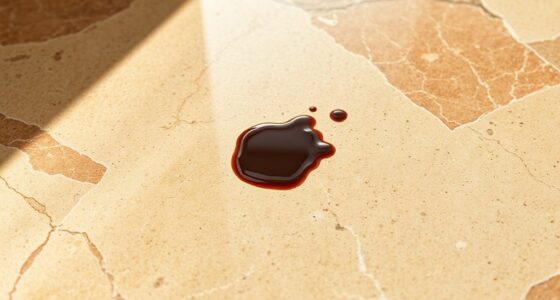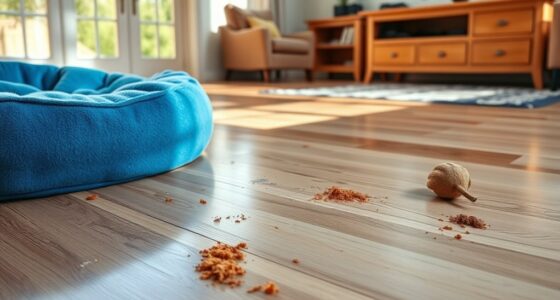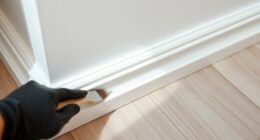To write a floor care SOP, start by identifying all cleaning tasks and their required frequencies, like daily sweeping and monthly polishing. Clearly detail each step using active instructions, incorporate safety procedures with proper PPE, and include visual aids if needed. Regularly review and update to keep procedures current with new products or safety standards. To build an effective SOP that keeps floors safe and spotless, follow these essential guidelines and insights further.
Key Takeaways
- Define specific cleaning tasks, frequencies, and responsible personnel to ensure consistency and thoroughness.
- Incorporate safety procedures, PPE requirements, and hazard handling protocols to protect staff and prevent accidents.
- Use clear, step-by-step instructions with active voice and visual aids to improve comprehension and execution.
- Regularly review and update the SOP to reflect new products, safety standards, and best practices.
- Emphasize safety, efficiency, and cleanliness to promote reliable, standardized floor maintenance routines.

Have you ever wondered what it takes to create an effective Standard Operating Procedure (SOP) for floor care? Crafting a clear, detailed SOP begins with understanding the core elements that guarantee your cleaning routines are consistent and safe. First, you need to establish a thorough cleaning schedule. This schedule outlines exactly when and how often each task should be performed, whether it’s daily sweeping, weekly mopping, or monthly deep cleaning. A well-structured cleaning schedule helps prevent overlooked areas, maintains cleanliness, and prolongs the lifespan of your flooring. It also provides your team with clear expectations, minimizing confusion and ensuring everyone is on the same page.
Equally important are the safety procedures embedded within your SOP. Floors can be hazardous if not properly maintained, so safety must be a priority. Your SOP should specify the use of proper personal protective equipment (PPE), such as gloves, slip-resistant shoes, and safety goggles, depending on the cleaning chemicals used. Include instructions on how to handle and store cleaning agents safely, emphasizing the importance of following manufacturer guidelines. Additionally, your safety procedures should address how to report hazards or accidents, ensuring quick response and minimizing risks. Clear safety protocols reduce the chances of slips, trips, and falls, protecting both your staff and visitors. Incorporating knowledge from aromatherapy products can also help create a calming environment during cleaning routines, which may improve staff well-being.
When writing your SOP, clarity is key. Use active voice to give direct instructions, making it easy for anyone reading it to understand their responsibilities. Break down tasks into simple, actionable steps. For example, instead of saying “clean the floors regularly,” specify “sweep the floors every morning and mop every afternoon using approved cleaning solutions.” This precision helps prevent errors and ensures consistency across shifts. Incorporate diagrams or visual aids if necessary, especially for complex procedures or safety measures, to enhance understanding.
Finally, your SOP should be a living document—something you review and update regularly. As new cleaning products or safety regulations emerge, revise your procedures accordingly. Make sure everyone on your team has access to the latest version and understands any changes. By doing so, you create a safer, cleaner environment, and your floor care routines become more effective and reliable. Remember, an SOP isn’t just about ticking boxes; it’s about establishing best practices that promote safety, efficiency, and cleanliness in every corner of your facility.
Frequently Asked Questions
How Often Should a Floor Care SOP Be Reviewed and Updated?
You should review and update your floor care SOP at least annually, aligning with your maintenance schedule. Regular SOP revision guarantees procedures stay current with equipment changes or new cleaning products. If your facility experiences significant changes or issues, it’s wise to review more frequently, such as every 6 months. Staying proactive helps maintain effective cleaning standards and keeps your staff informed of any procedural updates.
Who Is Responsible for Implementing the Floor Care SOP?
You are responsible for implementing the floor care SOP, guaranteeing staff responsibilities are clearly assigned and understood. You must oversee that team members follow procedures consistently and monitor accountability measures to maintain quality. It’s your role to train staff, address any issues promptly, and regularly evaluate adherence. By actively managing these aspects, you help ensure the SOP’s effectiveness and the cleanliness and safety of your floors.
What Equipment Is Essential for Effective Floor Care?
You need vital equipment like sweepers, mops, scrubbers, vacuums, and floor buffers to guarantee effective floor care. Regularly follow cleaning schedules to maintain cleanliness and prevent dirt buildup. Remember, equipment maintenance is essential—clean and inspect your tools regularly to keep them in top condition. This will help you achieve maximum results, reduce downtime, and extend the lifespan of your floor care equipment.
How Do I Train Staff on the Floor Care SOP?
Think of training your staff like teaching someone to ride a bike—you need hands-on practice. Start with hands-on training, guiding them through each step of the SOP. Use visual aids like videos or diagrams to make concepts clearer. Encourage questions and offer feedback. Regularly review procedures and observe their work to verify understanding. This approach builds confidence, much like mastering a new skill, ensuring everyone stays on the same path.
What Are Common Mistakes to Avoid When Creating a Floor Care SOP?
When creating a floor care SOP, avoid neglecting specific flooring materials, as different surfaces need tailored cleaning methods. Don’t overlook establishing clear cleaning schedules, which ensure consistency and prevent damage. Be cautious about vague instructions; instead, provide precise steps. Also, avoid skipping safety precautions or using inappropriate cleaning products. Regularly review and update the SOP to reflect changes in flooring types or cleaning techniques, guaranteeing it stays effective and relevant.
Conclusion
Think of your Floor Care SOP as a map guiding you through a treasure hunt. With clear steps and routines, you’ll navigate every corner smoothly, turning a messy maze into a shining path. When you follow your plan consistently, you’re the captain steering your ship safely through calm waters. Keep your SOP handy, adapt as needed, and watch your floors gleam like hidden gems—proof that a well-written plan turns routine cleaning into a shining success.
